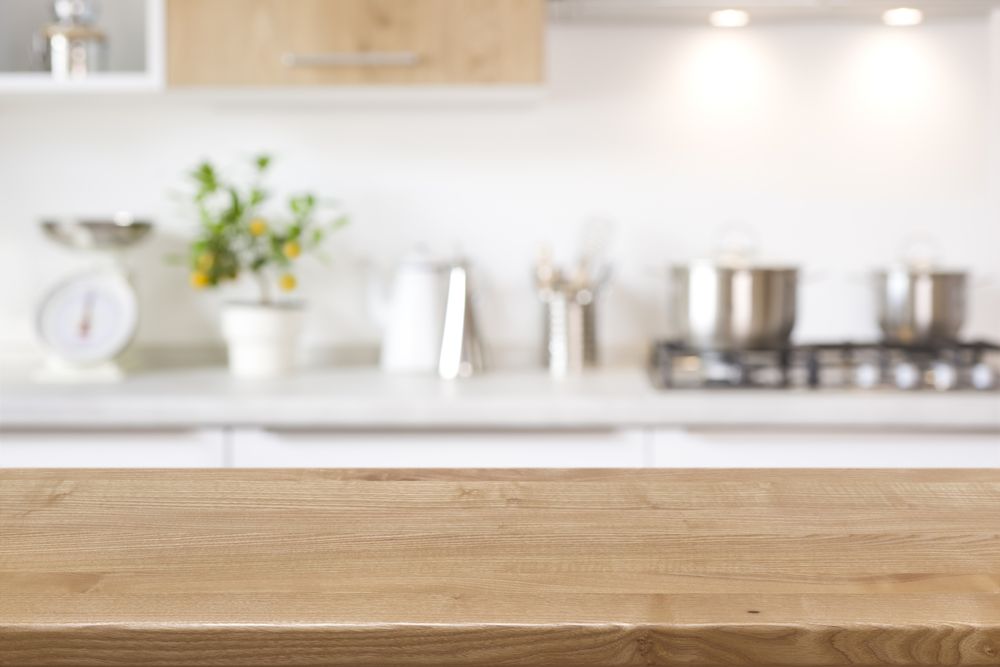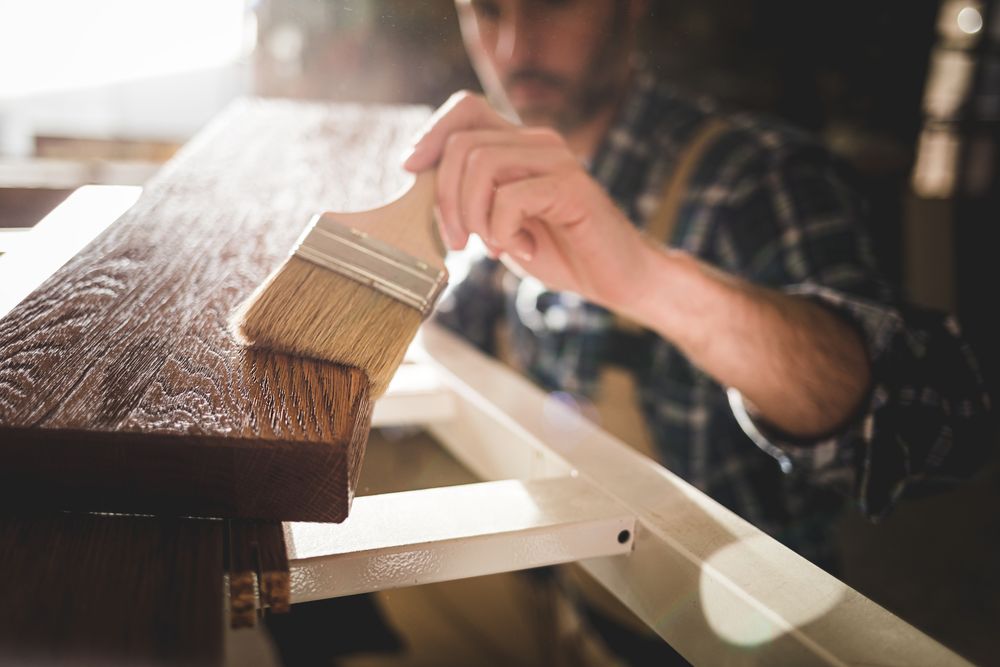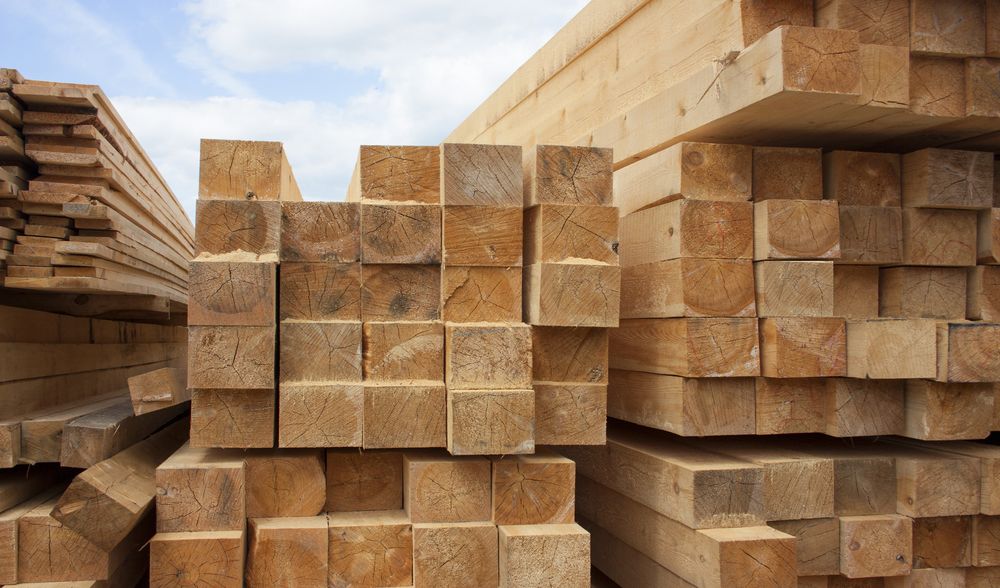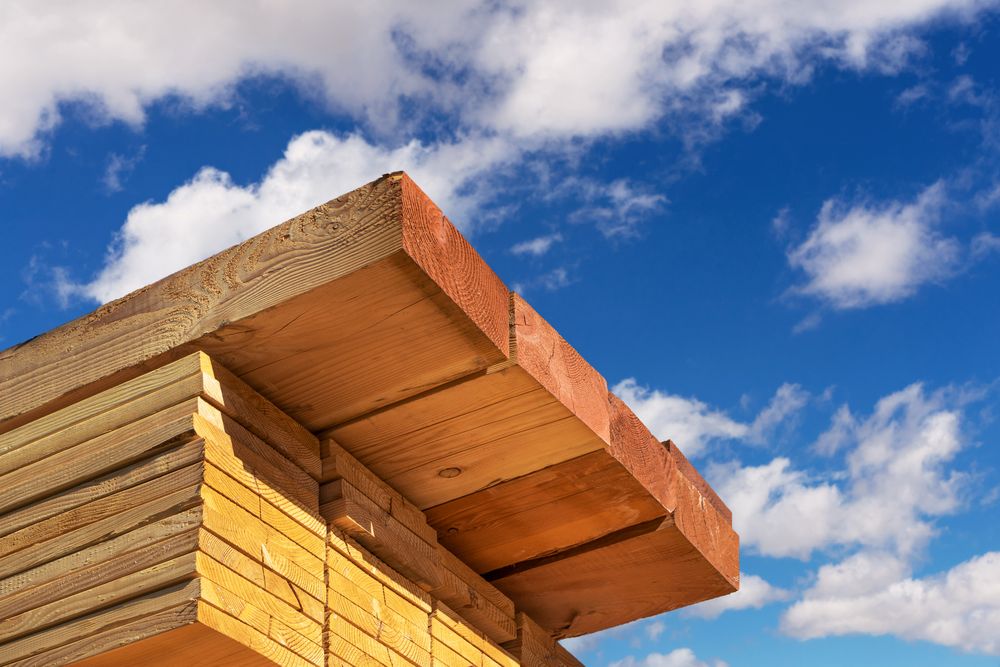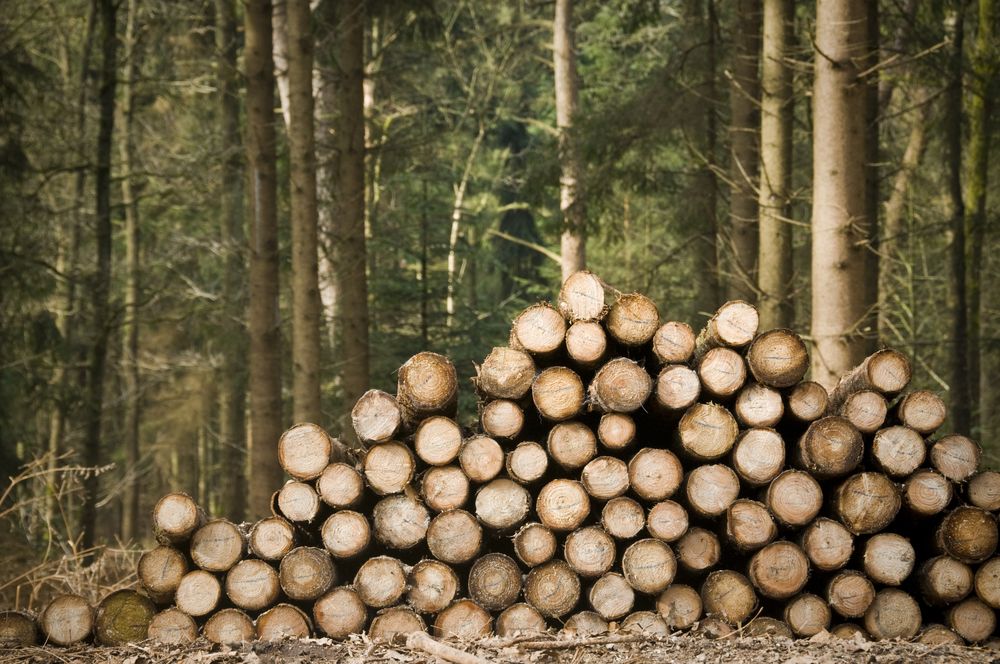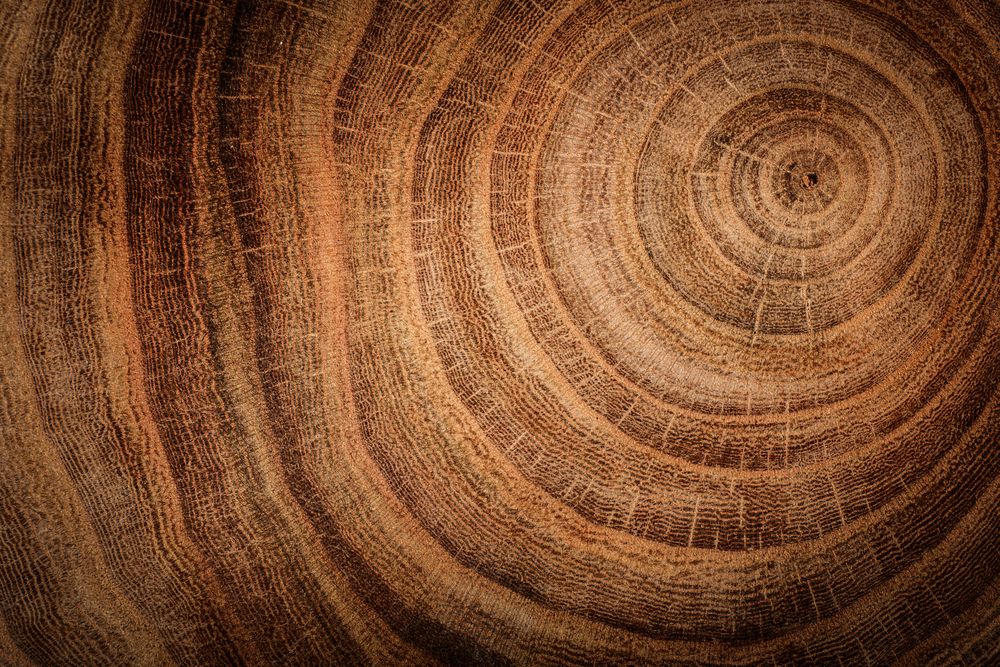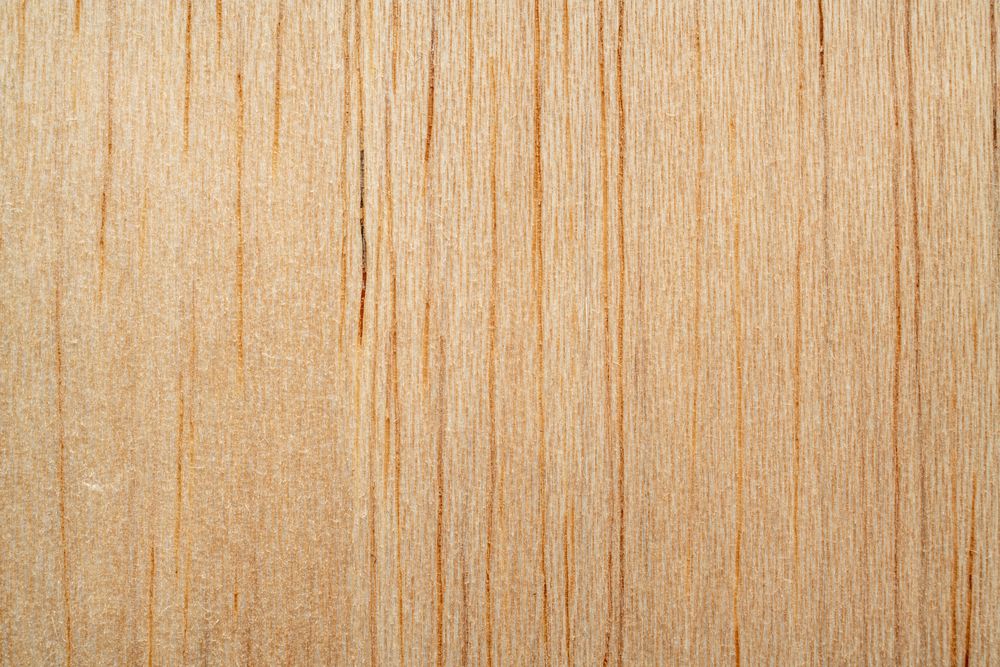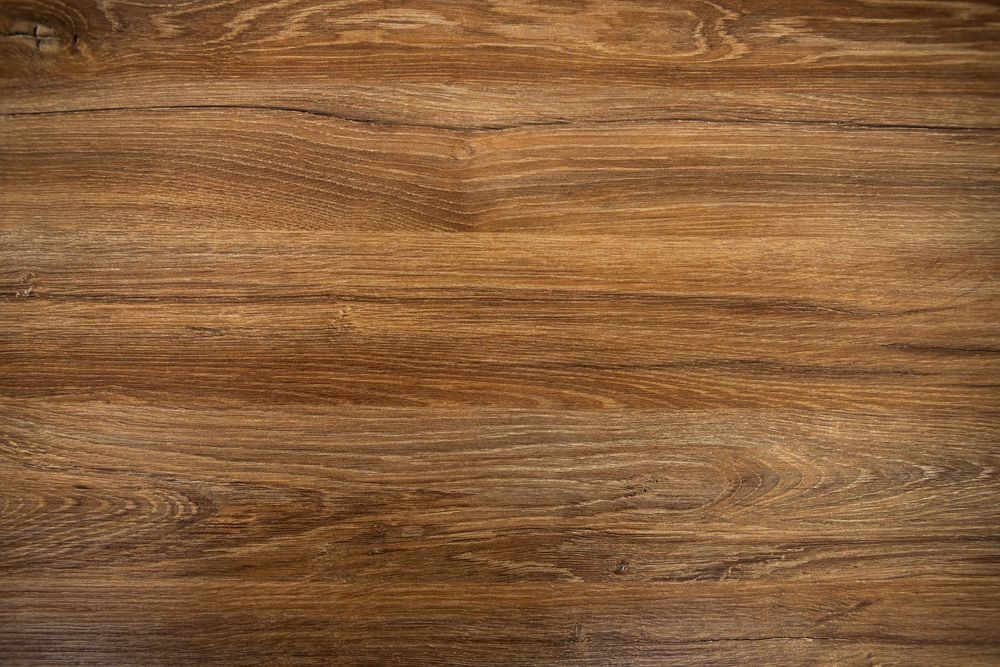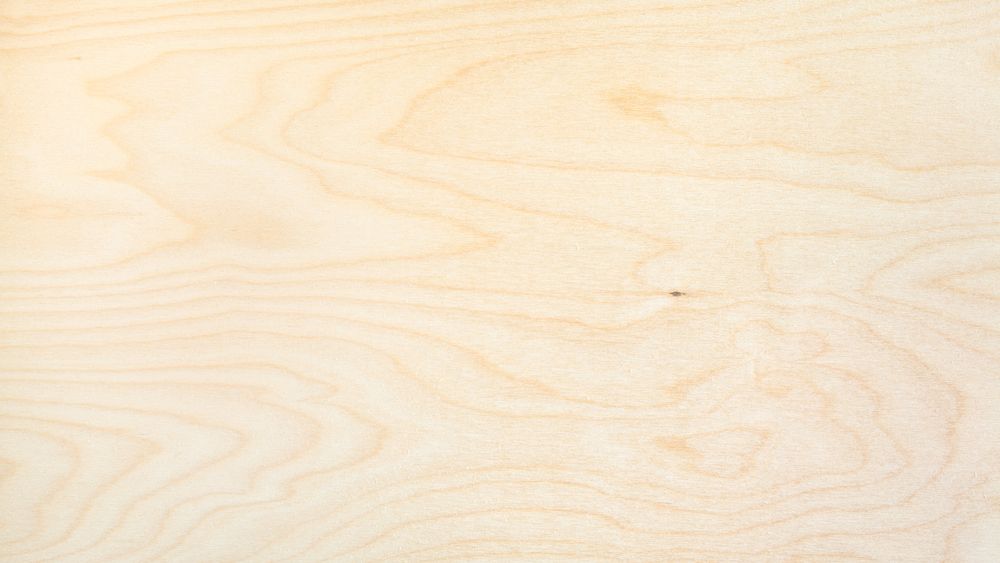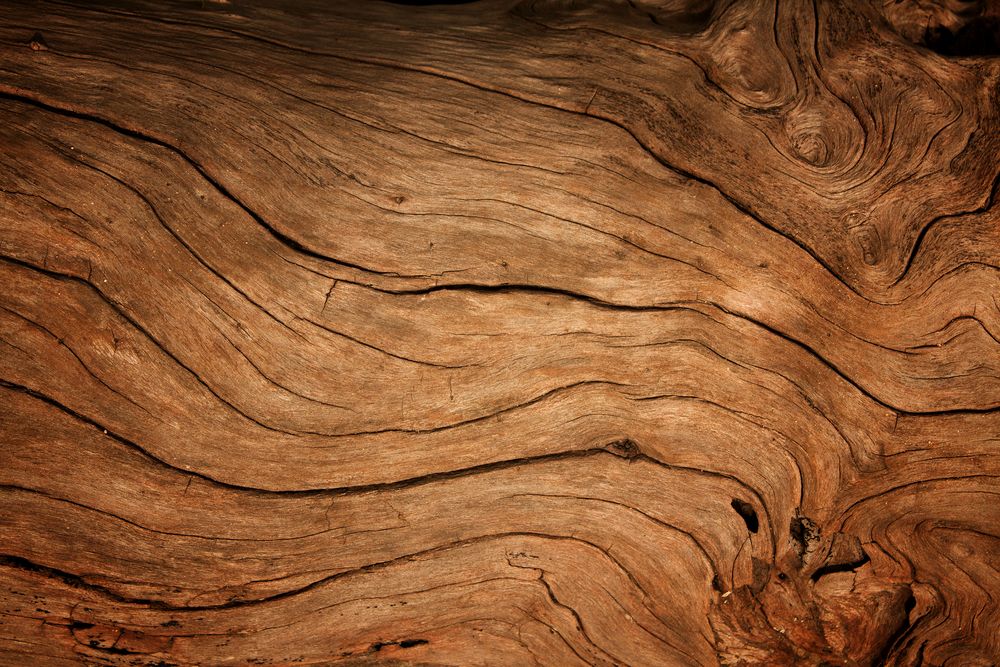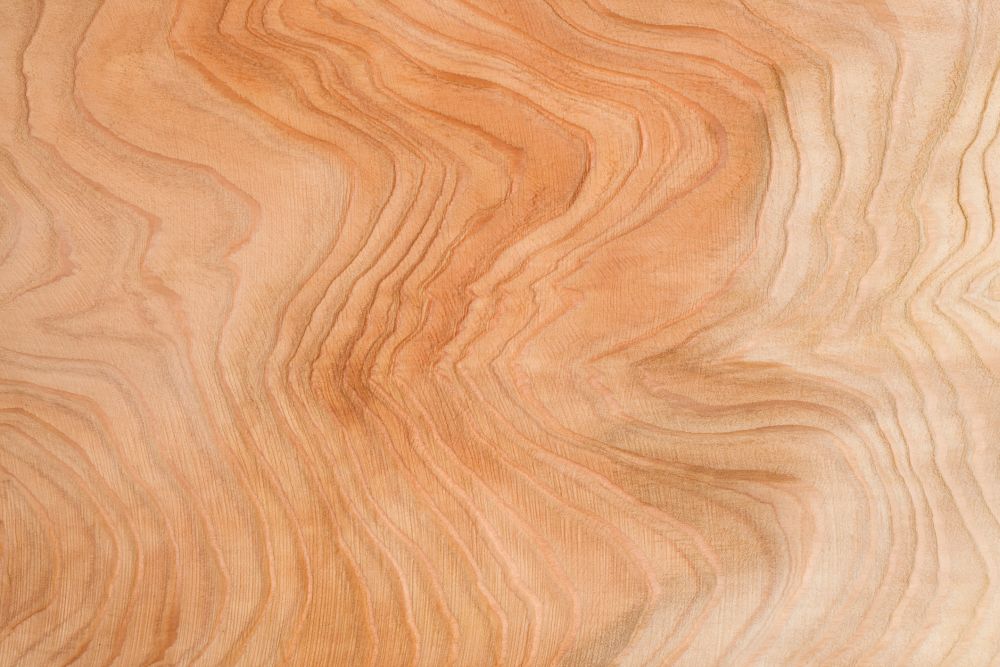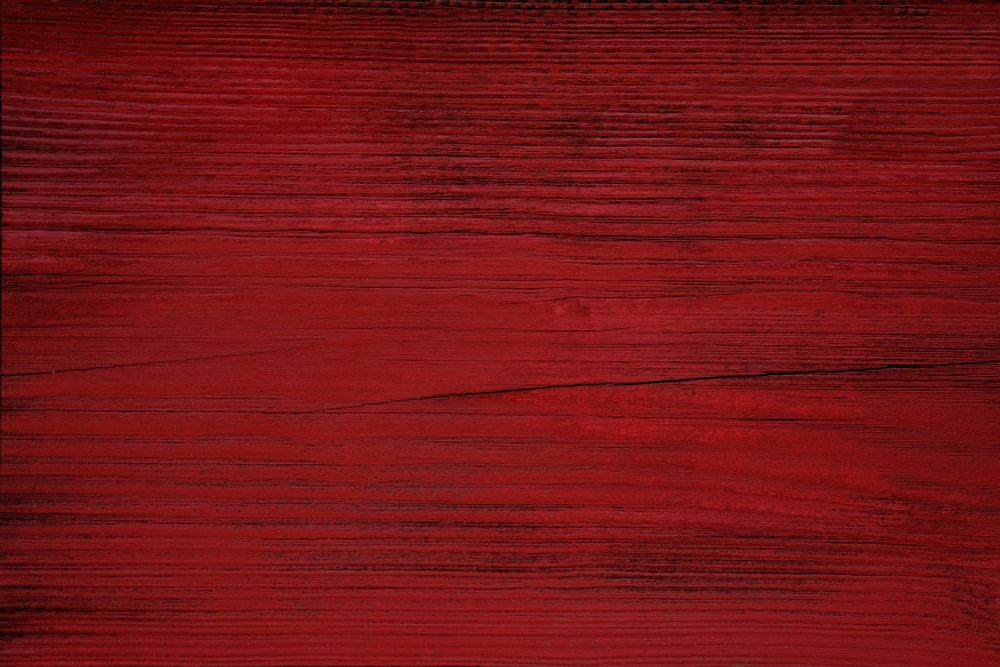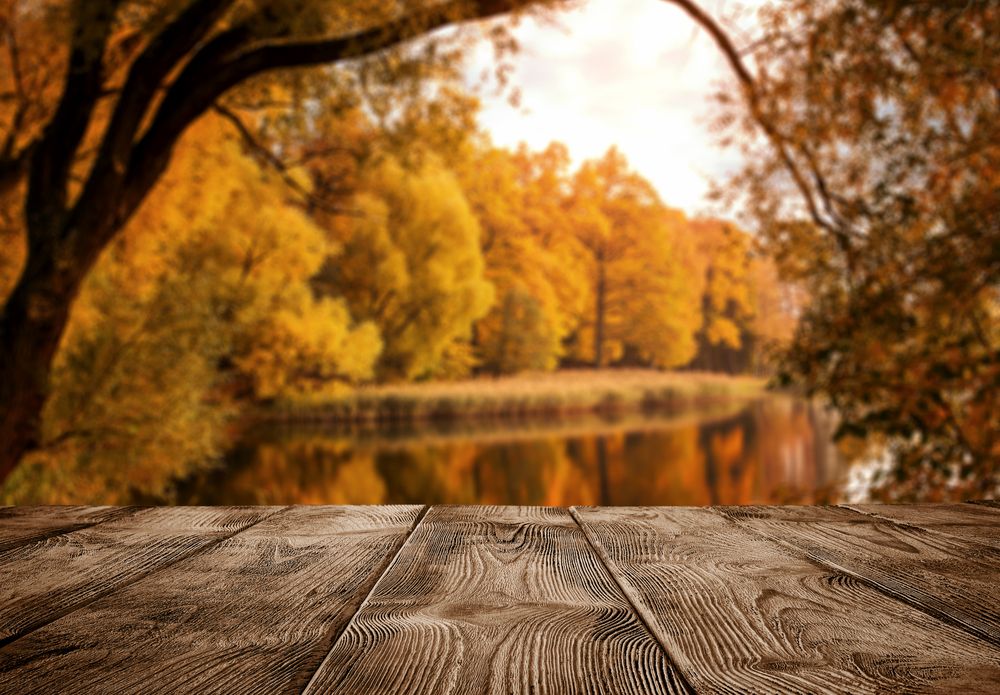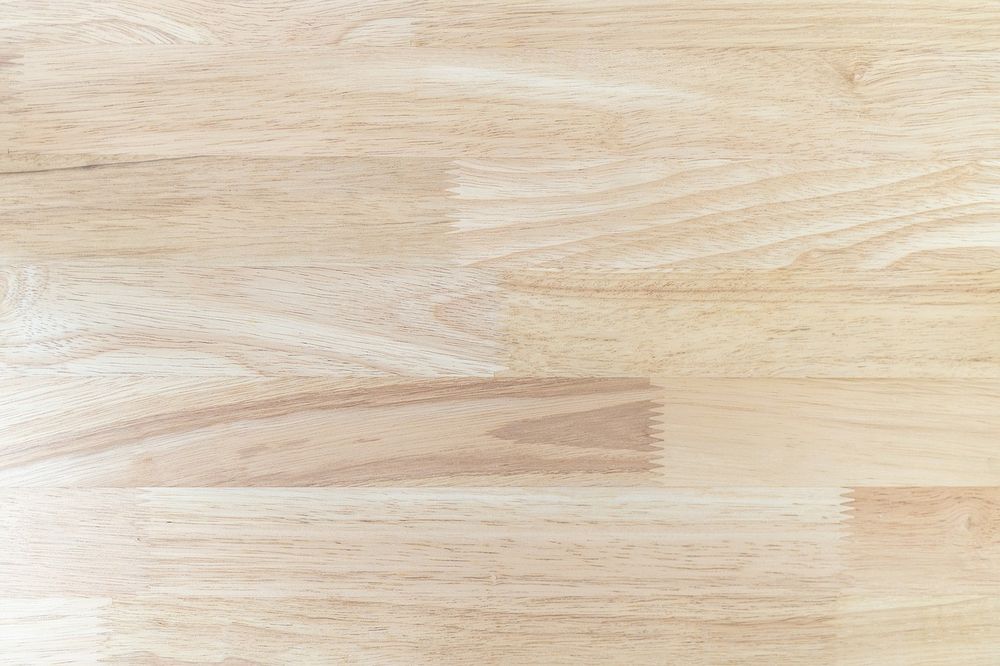Types of Wood 101: Pros and Cons for DIY Projects
Wood is a staple for building and construction; you can use it as fuel, housing material, cooking utensils, and more.Learn more about the different types of wood by following our guide to see which is best for your needs.
So, if you intend to use wood for a specific DIY job, it’s best to do your research and learn about the characteristics of each word type. This way, you can make an informed decision when starting a home improvement project without turning to a professional for help.
Types of Wood
Wood is divided into two major categories: softwoods and hardwoods. Softwood trees like cedars and pines tend to grow faster than hardwoods like oaks or maples. Hardwoods are typically denser than softwood.
Different wood colors are available, depending on the location from where it is sourced. An extensive amount of wood types is available when considering the scientific classification of the tree species.
Let’s review some wood species found in residential homes or manufacturing facilities producing home goods.
Pine
A type of softwood, pine has a speedy growth and is among the most abundant woods in North America. It is white to light yellow and has many knots in the wood. The sapwood is less durable than the heartwood and is more likely to rot.
Although pine is applicable in construction, you should not use it in places or activities with water, such as boatbuilding or in areas that often get wet. It’s primarily used for pulp and paper products.
Oak
Oak is a hardwood that varies in color from light tan to dark brown. It has a distinctive grain that makes it an excellent choice for furniture, flooring, cabinets, and paneling.
It comes from deciduous trees that are native throughout most of North America. Several oak varieties are available, but red oak is the most common because it grows faster than others. Compared to it, white oak requires a significant amount of growing time before being harvested for lumber production.
One downside of oak is its cost. Since this type of wood must grow for approximately 25 years before being cut down, oak tends to be more expensive than other materials.
Oak vs. Pine
Oak is denser than pine and, as a result, has more resistance to wear. Pines tend to have more open grain, making them worse for exterior use.
Pine is much more common and easier to find in North America, but it does not stand up as well to moisture and is more likely to warp, split, or rot.
Redwood
Redwood is another type of softwood used primarily for borders between properties, thanks to its resistance to rot and insects. It has a reddish-brown color with a straight-grain pattern.
Like cedar, redwood is an excellent material in construction. But you can mainly use it to create ornamental pieces such as decks or furniture, which do not tend to get wet often or have exposure to water.
Maple
Maple is a hardwood sourced from both deciduous and coniferous trees. The sapwood of maple is light, while the heartwood is darker.
This type of wood has a straight grain and a fine, even texture. It is often used in furniture, flooring, cabinetry, and musical instruments. Maple is also a popular choice for kitchen countertops.
Cedar
Primarily found on the west coast of North America, cedar is a red-brown softwood with a pleasant scent – hence the name cedar chest. You can use it in furniture manufacturing, fencing, and boatbuilding.
As with pine, cedar can rot if exposed to water or constant wet conditions. Cedar trees live about 200 years on average, which means they grow slower than pine but faster than hardwoods like maple or oak.
Teak
Teak also falls in the hardwood category, and it comes from Southeast Asia. It is golden brown and has a straight-grain pattern. Teak is one of the most durable woods and does not rot quickly even when it toucher water. It is often used for boatbuilding and outdoor furniture to withstand various weather conditions.
Rosewood
Rosewood is a type of hardwood that originates from Central America, South America, and India. It ranges in color from a deep red to almost black and has a very fine-grain pattern. It is expensive due to its rarity. Rosewood is used chiefly for high-end furniture, instrument building (especially guitars), and decoration.
Mahogany
Mahogany is a type of hardwood from tropical rainforests, mainly Central America and Africa. It is dark red and brown with a straight fine-grain pattern. This means it takes more effort to create intricate details on finished pieces since the wood burns easily during sanding.
Most people know that mahogany is typically more expensive than other woods. It’s because it must be cut from the rainforest and prepared for export. You can normally use this wood type for furniture, cabinetry, and musical instruments.
Ebony
Ebony is a type of hardwood found in Central America, West Africa, and Southeast Asia. It comes in dark brown to almost black with a straight-grain pattern. Ebony can be found in many species usually grouped in three categories: Madagascar, Indian, and Gabon.
Malagasy ebony is the most valuable due to its dark coloration and fine grain. These woods are mainly used for high-end furniture or musical instruments due to their high costs.
Fir
Fir is a softwood known for its light color and straight grain. People refer to it as fine-grain wood because it has a more delicate texture than other softwoods.
Fir is commonly used in construction since it’s cheaper than other types of wood. Another advantage is that fir is durable enough to endure weather conditions. Plus, you can easily paint or stain fir, although it does not have the best dimensional stability.
Douglas Fir vs Pine
Pine and Douglas fir are two of the most popular types of softwood. They have many similarities, but there are also some key differences. For example, Douglas fir is a bit harder than pine, making it less likely to warp or split when used in construction.
Furthermore, Douglas fir is lighter than pine, which can be an advantage when moving or transporting the lumber. On the other hand, pine is less expensive than Douglas fir. So if you’re looking for an affordable softwood that is still sturdy, then pine may be your best choice.
Ash
Ash is a type of hardwood found in North America and Europe. It has a light color and a straight grain. It is often used in furniture, sporting goods, and tool handles. The trees can grow quite large, so lumber production is efficient.
Like other hardwoods, ash is durable and resists rot and insect damage. It also machines well and takes finishes nicely. You may find ash in cabinetry, flooring, paneling, and even doors.
Birch
Birch falls in the hardwood category as well. It grows mainly in cold climates such as Canada and Russia. Birch has a light color with a reddish hue and a straight-grain pattern.
Birch is one of the cheapest hardwoods since it grows faster than other types of wood. It’s primarily used for furniture, doors, and butcher blocks. You can also find birch in tongue-and-groove boards for construction purposes.
Cherry
Cherry is a hardwood native to North America. It grows mainly in the east and has a reddish-brown color with a straight grain pattern.
Trees grow tall, which makes lumber production efficient. Plus, cherry wood is easy to manipulate since it doesn’t burn quickly like other types of wood during sanding.
Cherry is resistant to rot and insects. It also works nicely with tools and finishes due to its refined grains. You can find this type of wood in flooring, cabinetry, paneling, furniture, musical instruments (such as pianos), gunstocks, and tool handles.
Poplar
Poplar is a softer type of hardwood that originates from North America and Europe. It has a light color with a straight grain pattern. You might also notice gray or green in poplar wood. But don’t get your hopes up because they tend to darken over time.
Due to its low prices and accessible working properties, poplar is often used in furniture, millwork, plywood, doors, and other wooden constructions. However, it would be best to spend more time fine-sanding because poplar usually creates fuzzy edges.
Poplar vs Pine
Both poplar and pine are excellent choices for lumber, but they have different characteristics. Poplar is softer and more forgiving than pine, making it a better choice for furniture and other objects that may be bumped or scratched.
Pine is harder and more durable than poplar, making it a better choice for wood projects exposed to the elements or heavy use. In general, poplar is a better choice for indoor projects, and pine is a better choice for outdoor projects.
Walnut
Walnut is another hardwood that grows in North America and Europe. It has a medium-soft texture, a dark color that reminds you of chocolate, and it usually comes with a straight grain pattern. In some cases, though, you might notice waves.
This type of wood is durable and resists rot. But it’s not that efficient at withstanding insects. It also machines well and takes finishes beautifully. You might even come across the American black walnut, the most expensive type of walnut. Walnut is mainly used for furniture, cabinetry, flooring, paneling, and gunstocks.
Spruce
Spruce is the most common type of wood in the world. It grows in cold climates and has a light color with a straight grain pattern.
Trees grow quickly, so lumber production is efficient. Plus, spruce resists rot and insects. This type of wood is often used for construction, such as framing, roofing, and subflooring. You can also find it in furniture, flooring, and plywood.
Hemlock
Hemlock is a softwood that comes from cold climates. It has a coarse texture with a yellowish color and a prominent grain pattern.
On average, hemlock has lower strength than other woods due to its low density. But the trees grow fast, which generates more production for lumber mills. You’ll mostly find hemlock in construction for subflooring, sheathing, and trusses.
Eucalyptus
Eucalyptus is a type of softwood that originates from Australia and South Africa. It has a light color with a straight grain pattern that usually contains knots. However, it tends to darken as it ages. For example, you can find pink or deep red eucalyptus lumber.
This type of wood is very strong and easy to work with, so it’s often used in fencing, shade structures, paneling, millwork, and support beams. However, it doesn’t withstand shock well and has a moderate durability rating. On top of that, it distorts as it dries.
Mango
Mango is a hardwood that comes from Southeast Asia and the Caribbean. It’s yellowish and has a straight grain pattern.
This type of wood resists rot and insects, but it’s not very strong due to its low-density rating. You’ll mostly find mango in millwork, flooring, furniture, cabinetry, and paneling. Another everyday use is in handicrafts and carpentry.
Beech
Beech is a hardwood that grows in North America, Europe, and Asia. It comes with a medium-coarse texture and light color with an open grain pattern.
This type of wood is known for its high shock resistance, stability, and durability. On top of that, it machines well since it’s easy to work with. It’s popular for furniture, millwork, flooring, and gunstocks.
Hickory
Primarily found in North America and China, hickory is a type of hardwood with a coarse texture, light- to dark-brown color, and an open grain pattern.
You’ll often find hickory in applications that require high strength, toughness, and wear resistance. It’s often used in construction, such as beams, columns, flooring, and stair treads. Hickory is also famous for tool handles, athletic equipment, and knife handles.
Balsa
Balsa is a softwood that comes from South America. It has a very light color and an open grain pattern.
This type of wood is often used in model-building, furniture, and marquetry. It’s also popular for millwork, such as doors and window frames. While it’s strong for its weight, balsa doesn’t handle well in applications that require shock resistance.
Kapur
Kapur is a softwood that comes from Papua New Guinea and Indonesia. It has a very light color with an open grain pattern that sometimes contains swirls or circles.
You’ll mostly find Kapur in flooring, paneling, plywood, and veneer. It’s known for its resistance to decay and termites. Plus, it’s stable and easy to work with.
Acacia
Acacia is a softwood that originates from Asia, with most of it coming from India. It has a light color with an open grain pattern that may contain swirls or spots.
You’ll mostly find acacia in flooring, paneling, plywood, cabinetwork, and veneer due to its resistance to decay and termites. Plus, it has a low shrinkage rating, ideal for solid-wood products and sawn-timber production.
Cocobolo
Cocobolo is a type of hardwood that comes from Central America. It has a fine texture, oily feel, dark-red or chocolate color, and an open grain pattern with coarse pores. The tree grows to be over 100 feet high.
Cocobolo logs are irregularly shaped and contain numerous voids and knotholes. This type of wood is known for its resistance to shock loads, stability, and strength.
You’ll mostly find cocobolo in furniture, cabinets, paneling, gunstocks, and other high-quality woodworking projects.
Lacewood
Lacewood is a type of softwood that comes from Australia. It has a very fine texture with an open grain pattern that may contain swirls or growth rings.
This type of wood is often used in furniture, cabinets, and other high-end woodworking projects. It’s also popular for musical instruments, such as guitars and violins. Lacewood is stable and easy to work with, but it doesn’t have a high resistance to shock loads.
Wenge
Wenge is a type of hardwood that comes from Africa, with most of it coming from Cameroon or Zaire. It has a fine or coarse texture with darker stripes. This type of wood is known for its stability and resistance to shock loads.
However, it doesn’t do well in applications that require a high durability rating. On top of that, it machines and stains poorly. You’ll mostly find wenge in furniture, cabinets, paneling, and other high-end woodworking projects.
Zebrawood
Sourced from Central Africa, zebrawood is a type of hardwood with a reasonably high density. The tree can grow up to 100 feet, and the wood is yellow-brown with dark streaks that resemble zebra stripes.
Although this type of wood is heavy and robust, it’s difficult to manipulate because of its interlocking grain. You can use zebrawood for veneer, boatbuilding, furniture, tool handles, skis, and decorative purposes.
Yew
Yew is a closed-poor softwood like pine or cedar, which can be found in Europe, northwest Africa, southwest Asia, and northern Iran. It’s one of the toughest softwoods.
At the same time, yew is easy to manipulate and versatile, making it suitable for flexible products like bows. It’s not susceptible to shrinkage.
Yew is red-brown and has a beautiful contrast with the white sapwood. It is very expensive to acquire and should not come from wasted trees but only from those that have been cut down for this purpose. It’s primarily used for decorative purposes in cabinetry, paneling, gates, tool handles, furniture,and parquet flooring.
Types of Wood FAQ
Discover more about various types of wood.
What are dark wood types?
Dark wood types include ebony, walnut, mahogany, cherry, birch, teak, red oak, ash, lacewood, cocobolo, and maple.
What are light-colored woods?
Among light-colored woods, you can find pine, oak, fir, ash, birch, poplar, spruce, eucalyptus, beech, hickory, balsa, Kapur, and acacia.
What are rot-resistant wood types?
Some rot-resistant wood types include fir, pine, redwood, larch, juniper, spruce, and cedar.
What is the strongest wood?
The strongest wood is believed to be wenge, followed by teak and mahogany. Other options include cocobolo, jatoba, hickory, and balsa.
What is the most expensive type of wood?
The most expensive type of wood is the amboyna burl, followed by lignum vitae and purpleheart. Ebony, cocobolo, and zebrawood are also on this list.
What is a lightweight wood?
Balsa is the lightest type of wood, weighing in at around 0.5 pounds per cubic foot. It’s often used in model airplanes and other lightweight objects.
What is the most flexible wood?
Yew is the most flexible wood, while oak and poplar are considered among the stiffest.
What makes a good shock-resistant wood?
Some good shock-resistant woods are lacewood, wenge, and mahogany. These woods have a high density.
What type of paint to use over stained wood?
You can use any type of paint over stained wood, but you may need to apply a primer first. If you’re using latex paint, you should clean the wood with a mild soap and water solution, let it dry completely, then sand or drill before painting.
What type of wood is used in framing a house?
House framing is typically done with lumber that is 2×4 or 2×6 inches in size. Pine and fir are two of the most common types of wood used for framing houses.
What is the difference between hardwood and softwood?
Hardwoods are made from trees that lose their leaves each year, while softwoods are made from trees that keep their leaves all year long.
What is the best type of wood for making bows?
Yew, hickory, and bamboo are among the best types of wood used to make bows. The heartwood found at the center of a yew branch makes strong bowstrings.
Is redwood a hardwood?
No, redwood is a kind of softwood. It’s also known as sequoia.
Is cedar a hardwood?
No, cedar is a softwood. Cedar trees live about 200 years on average.
What are the best types of wood for furniture?
Mahogany, cherry, oak, and maple are some of the best types of wood for furniture. These woods are strong and durable.
What is the most common type of wood?
Pine is the most common type of wood in the United States. It’s often used to make lumber, plywood, and other construction materials.
What are the types of wood cabinets?
Cabinets are typically made of wood types like oak, maple, birch, cherry, and alder. You can also find cabinets made from less common woods like wenge, padauk, and zebrawood.
What are the natural wood colors?
The natural colors of wood vary depending on the species of tree. Some common colors include light brown, dark brown, olive green, and reddish-orange.
What is a burl?
A burl is a growth on the trunk or branch of a tree that’s often used for decorative purposes. Burls are found in many different types of wood, including ebony, walnut, mahogany, cherry, birch, teak, red oak, ash, lacewood, cocobolo, and maple.
What is extreme wood?
Extreme wood is a type of wood that’s processed to be much denser than average. It can also be very lightweight or highly flexible.
What is wood made of?
Wood is made from tree cells. The cell walls are strong and can be compressed or bent without breaking. This makes wood a solid and versatile material for construction and other purposes.
Is Douglas fir a hardwood?
No, Douglas fir is a softwood. It’s often used in house framing and manufacturing. Douglas fir trees live an average of 200 years.
What are the types of wood grain patterns?
Tangential, radial, and spiral are the three main types of wood grain patterns. A tangential pattern features lines that run at an angle to the growth rings, while radial patterns run straight across the growth rings. Spiral grains flow in a circular direction around the tree trunk or branch.
What is the strongest wood in the world?
The strongest wood in the world is laminated bamboo. Bamboo is a type of grass that’s often used for construction and other purposes. It’s strong, durable, and can withstand a lot of weight without breaking.
What are the types of wood boards?
Softwood boards are typically used for making 2x4s, 4x4s, and other framing materials. Hardwood boards are often used to make trim boards, flooring tiles, plywood panels, and different types of decorative or structural boards.
How to identify wood?
If you’re wondering how to tell what kind of wood you have, you can burn a small slice of the wood with a match, apply oil or wax to the surface, or scratch the surface with metal and see if the material contains iron.
What are the wood grain types?
There are three types of wood grain: edge grain, end grain, and face grain. Edge grain is the most common type and features lines that run parallel to the edges of the board.
End grain is when the lines run perpendicular to the board’s edges. Face grain is when the lines are running in the same direction as the board’s width. This is the strongest type of grain and is often used for furniture and other decorative items.
What type of sandpaper for wood should I use?
Depending on the type of wood you’re working with, you’ll need to use different grades of sandpaper. For softer woods like pine, use 80-100 grit paper. Oak requires 120-150 grit papers, while harder woods like maple require 220-320 grit papers.
What type of vinyl to use on wood?
Two main types of vinyl are recommended: cast and extruded. Cast vinyl is more expensive but the best material for working on wood. Extruded vinyl can work on all types of material, though it’s only recommended for occasional jobs.
What type of wood are pallets made from?
Pallets are typically made from softwood, like pine or fir. They’re strong and durable but not as aesthetically pleasing as other types of wood.
What type of wood is best for a deck?
The best type of wood for a deck is hardwood like cedar, redwood, or mahogany. These woods are naturally resistant to decay and insects, and they last longer than other types of wood.
How to tell what type of wood floor you have?
If you’re not sure what type of wood floor you have, use a magnet to determine whether or not the material contains iron. Iron is only used in hardwoods, so if the magnet doesn’t stick, it’s likely softwood.
What type of paint should I use for outdoor wood?
Outdoor wood should only be painted with exterior grade paints. These are specially designed to resist UV rays and other types of weather damage. Exterior grade paint is also more oil-based, which prevents moisture from seeping into the pores in the wood.
What type of wood should I use for a raised garden?
When choosing a type of wood to use for a raised garden, you should keep in mind how often it will be exposed to water. Woods like cedar and redwood are naturally resistant to rot and bugs, so they’re your best option.
What is the best type of oil finish for outdoor wood?
The best types of oils to use for outdoor wood are linseed oil, tung oil, and Danish oil. These oils form a protective layer that locks out moisture and prevents the wood from rotting or warping.
Final Thoughts on Types of Wood
There are many different types of wood, each with unique properties. When choosing a type of wood to use for your next project, be sure to consider the climate, the intended use, and the desired look and feel. With so many options to choose from, you’re sure to find the perfect wood for your needs.
What home improvement project do you have in mind that requires a specific type of wood? Let us know in the comment section below!
